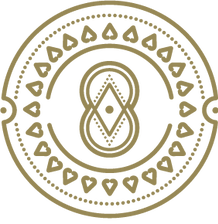Author: Rianne Chittenden
Breath is the first thing to enter the body when life is born and the last thing to leave when life is over, yet it is more than oxygen carried within the breath that is essential to life. If oxygen is pumped into a dead body, life will not return. There is this raw energy. The original creative life force that is responsible for respiration, oxygenation and circulation. It is the intelligence that flows from one cell to the next. Ayurveda (East Indian Medicine) calls it prana. Chinese Medicine calls it Qi. Christians call it the holy spirit. Science calls it light photons from the sun. No matter the word, it is the currency of life. For those who know us, know we love Ayurveda, so we will call it prana here.
How you live and the choices you make on the macro-level impact your being all the way down to the micro-level, influencing the cell to cell communication. You are made of trillions of independently functioning cells that are interdependent on each other. It is Prana that carries the molecules of food, water and air to the cells. Once these molecules cross the cellular membrane to the inside of the cell, a cascade of chemical reactions occurs that turn the lifeless molecules of food, water and air into nourishment and fuel for the body.
Knowledge is power. When you are aware of how something works, you are more likely to pay attention to it and consequently know how to address any issues that may arise. This is your body. Kudos to you for taking the time to read this article. You are showing up, curious about how your body works, with a desire to find harmony and healing. As we dive into the mechanics of breath, I invite you to make this an experiential process. Place one hand on your chest and one hand on your belly. Imagine roots are coming up from the Earth, entwining around your hips and legs, supporting you so there is no effort on your part. Relax the shoulders blades down and soften the upper body as you read about what is happening with each breath.
Imagine your chest is an accordion and your abdominal cavity is a water balloon. As you breathe out, pressure increases inside the accordion, and air is forced out. When you breathe in, supporting muscles pull your chest open, pressure decreases inside and air is pushed into the body by atmospheric pressure always surrounding you; So despite how it may feel when you breathe in, you not pulling air into the body. As you breathe out, compression is released off the top of the abdominal cavity and it rests as an untouched water balloon. As you breathe in, the chest compresses the top of the abdominal cavity, it gets squeezed and bulges at the bottom. The principal muscle that facilitates this dance of breath is the diaphragm. It is a dome-shaped muscle that separates the chest and abdominal cavity. I highly recommend checking out this short animation on how the diaphragm moves with the breath.

When there is ease and relaxation with the inhalation and exhalation and proper posture, prana is able to flow freely from one cell to the next. Yet, we are a culture that normalizes stress and expects us to work past our bodies’ limits every day. We hold our bodies in unnatural, awkward positions. We sit or stand for too long. This lifestyle impedes the flow of prana throughout the body. Ayurveda says stagnant prana is the root cause of all disease. And here we are, the sickest culture in the world. We rarely die of old age. We die of disease.
The only way to make lasting change is to start small. Start with your breath. Tune into it throughout the day. Is your breath coming easy or is it forced and shallow? The inhalation always takes care of itself, so check in with the exhalation. Are you fully breathing out? The majority of time when I am feeling overwhelmed/anxious and tune in, I am holding my breath, not allowing a full release of air from my lungs.
My suggestion? Start by incorporating focused breathwork called pranayama into your routine: Prana=Breath and Ayam=to control. Pranayama is the art of controlling the breath to control the mental activity. If you are brand new to breathing exercises, here is a great place to start. From there, this is a lovely how-to on a basic pranayama. Always do pranayama away from food, with an empty stomach and bladder. Carve out the time you need and dedicate your full attention to the practice so you’re not rushing or distracted.
Taking the time to tune into your breath for 10-20 minutes a day will actually save you time in the long run. You will begin to notice when overwhelm happens sooner and you can address it before burnout happens.
“The internal movement of prana is the movement of sensation, thought, feeling, and emotion. Thus prana and mind are deeply connected. The physical manifestation of prana is breath. Breathing and mind are closely connected. Ayurveda says that breathing is the physical part of thinking and thinking the psychological part of breathing. Every thought changes the rhythm of breath, and every breath changes the rhythm of thinking. When one is happy, blissful, and silent, breathing is rhythmic.”
-Dr. Vasant Lad: The Complete Book of Ayurvedic Home Remedies
Nothing in this article should be construed to constitute medical advice, diagnosis, treatment or prescribing, or a substitute for such activity. I am not a medical doctor or other licensed healthcare practitioner or provider. I do not provide medical advice, diagnosis, treatment or prescribing, or a substitute for such activity. I make no promise of benefit, claim of cure, legal warranty, or guarantee of results to be achieved. Do not disregard medical advice or delay in seeking it because of any information provided by or through me in this article or otherwise, or because of any information provided through my services, or available on or through my social media platforms. Consult with a licensed healthcare practitioner before altering or discontinuing any current medications, treatment or care, or starting any diet, exercise or supplementation program, or if you have or suspect you might have a health condition that requires medical attention.

